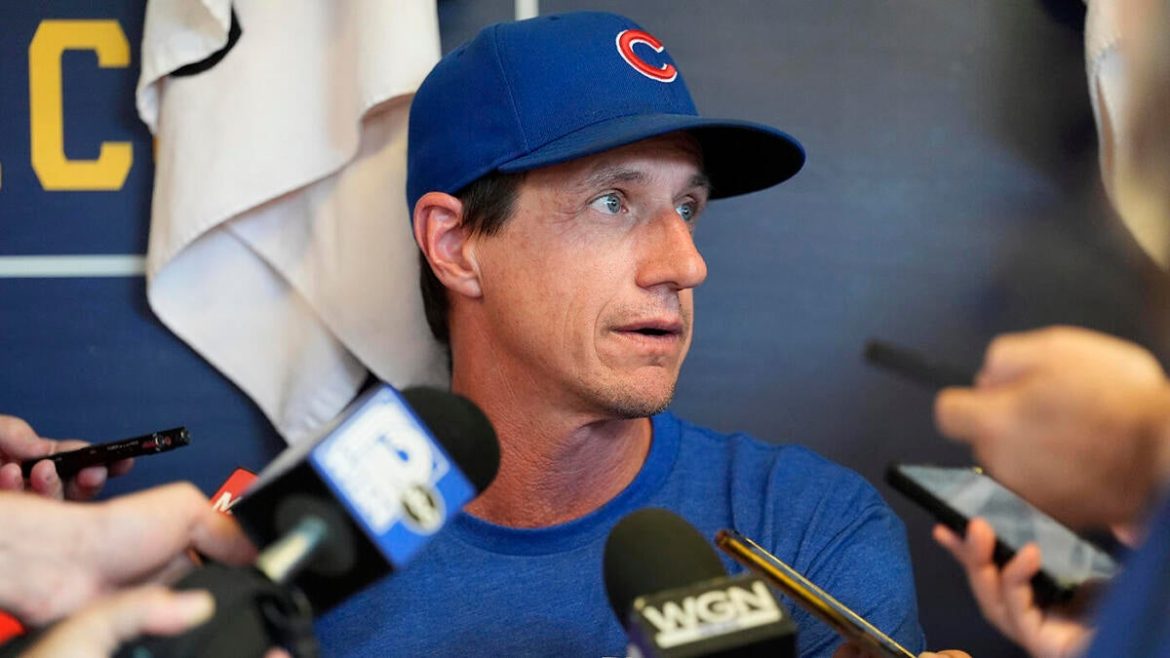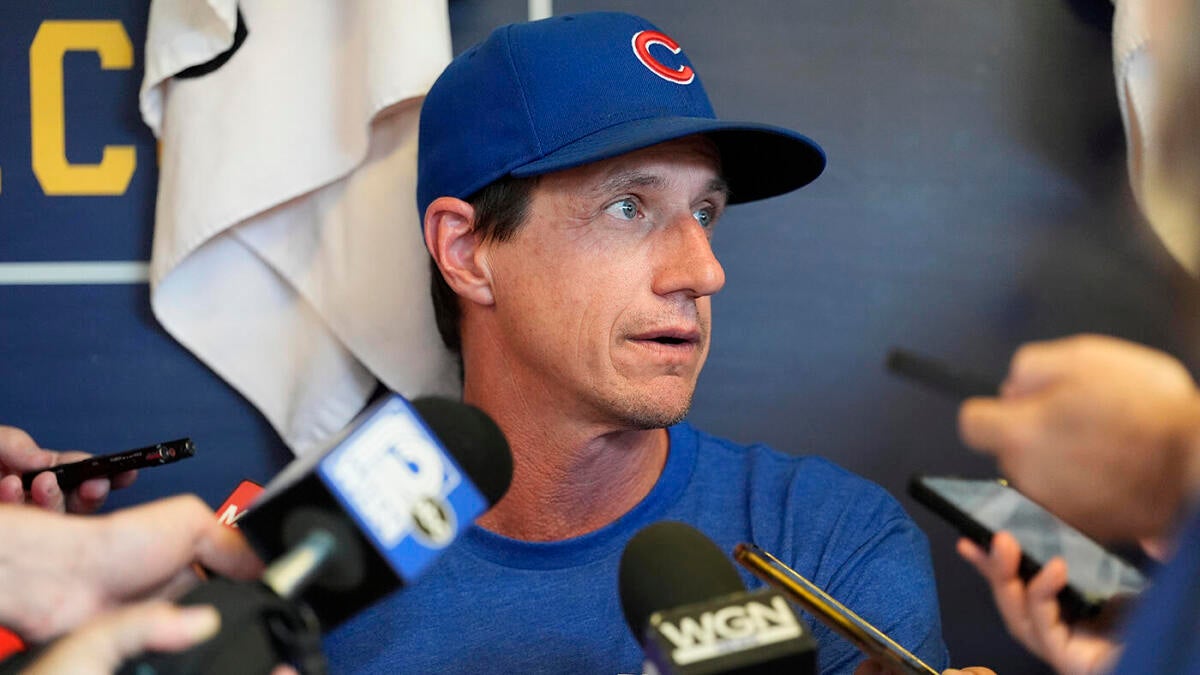The Art of the Deal: Decoding MLB Trade Deadline Strategies for 2025
The High-Stakes Chess Match of Baseball
The MLB trade deadline is more than just a transactional event—it’s a high-stakes chess match where every move can redefine a team’s season. In 2025, the landscape is set for a particularly intense deadline, with contenders and pretenders alike preparing to make bold moves. The question isn’t just *who* will be traded, but *how* teams will strategize to maximize their chances of success. This report dives deep into the factors driving aggression, the teams most likely to make waves, and the potential consequences of their actions.
The Anatomy of Aggression: What Drives Trade Deadline Moves
Trade deadline aggression isn’t random—it’s a calculated response to a variety of factors. Teams that are most likely to make significant moves share several key characteristics:
Contention Window: The Ticking Clock
Teams with a clear path to contention are the most aggressive at the deadline. The window of opportunity in baseball is narrow, and teams know that missing a chance to win now could mean years of rebuilding. A team hovering just outside the playoff picture but with a glaring weakness might feel compelled to make a splash. For example, a team with a strong pitching staff but a weak offense might target a power hitter to solidify their lineup.
Team Needs: Filling the Gaps
Every contender has holes in their roster, and the trade deadline is the perfect time to address them. Whether it’s a struggling bullpen, a lack of offensive firepower, or an injured star player, teams will be looking to fill these gaps with impactful acquisitions. For instance, a team with a weak bullpen might target a proven closer or setup man to bolster their late-inning relief corps.
Financial Flexibility: The Payroll Puzzle
A team’s financial situation plays a crucial role in their ability to make aggressive moves. Teams with ample financial resources can absorb high-priced contracts and make big splashes. Conversely, teams with tighter budgets may need to be more creative, perhaps targeting younger, cost-controlled players or trading for players with team-friendly contracts.
Farm System Strength: The Future vs. the Present
A robust farm system allows teams to trade prospects without significantly impacting their long-term outlook. Teams with weaker farm systems may be more hesitant to part with top prospects, as they can’t afford to mortgage their future for immediate gains. For example, a team with a deep farm system might be willing to trade a top prospect for a rental player, knowing they have other prospects ready to step up.
Organizational Philosophy: The Bold vs. the Cautious
Some organizations are inherently more aggressive than others. Teams with a history of making bold moves at the deadline are more likely to continue that trend. Risk tolerance also plays a role, with some teams willing to gamble more than others. For instance, a team known for its aggressive approach might be more likely to trade for a high-priced rental player, even if it means overpaying.
Market Dynamics: Supply and Demand
The availability of desirable players significantly impacts trade deadline activity. A market flooded with quality options can drive down prices, encouraging more teams to participate. Conversely, a thin market can lead to bidding wars and inflated prices. For example, if there are several high-quality starting pitchers available, teams might be more cautious about overpaying for one.
Internal Pressure: The Fan Factor
Ownership and fan expectations can influence a team’s willingness to be aggressive. Teams facing pressure to win now may feel compelled to make a splash, even if it means overpaying. For instance, a team with a passionate fan base might feel the need to make a big move to keep the fans engaged and excited.
The Contenders: Teams Poised to Make Moves
Based on current standings, identified needs, and reported rumors, several teams are likely to be among the most aggressive at the 2025 trade deadline:
The Chicago Cubs: A Team on the Rise
The Cubs are leading contenders for trades, given their position in the NL Central and potential resources to improve their roster significantly. With a strong farm system and financial flexibility, the Cubs are well-positioned to make a splash. They might target a high-impact starting pitcher or a power-hitting outfielder to solidify their lineup.
The Philadelphia Phillies: Filling the Gaps
The Phillies will be looking for a center fielder and bullpen help. With a strong offense but a weak bullpen, the Phillies might target a proven closer or setup man to bolster their late-inning relief corps. They also might look for a center fielder to improve their defense and add another offensive weapon.
The San Diego Padres: The Usual Suspects
The Padres are also expected to be aggressive at the MLB trade deadline. With a strong offense and a solid pitching staff, the Padres might look to add a high-impact starting pitcher or a power-hitting outfielder. They also might target a defensive upgrade at a key position, such as shortstop or center field.
The Seattle Mariners: The Dark Horse
As of late June 2025, the Mariners appear to be aggressive buyers. With a strong offense and a solid pitching staff, the Mariners might look to add a high-impact starting pitcher or a power-hitting outfielder. They also might target a defensive upgrade at a key position, such as shortstop or center field.
The Targets: What Teams Are Looking For
Identifying potential targets requires considering each team’s specific needs. Some commonly sought-after commodities at the trade deadline include:
Starting Pitching: The Ace in the Hole
Teams always covet reliable starting pitching, especially those looking to bolster their playoff rotations. Rental pitchers on expiring contracts are often hot commodities. For example, a team with a weak starting rotation might target a high-impact starting pitcher to solidify their rotation.
Relief Pitching: The Bullpen Boost
A dominant bullpen can be the difference between a deep playoff run and an early exit. Teams will be aggressively pursuing closers, setup men, and left-handed specialists. For instance, a team with a weak bullpen might target a proven closer or setup man to bolster their late-inning relief corps.
Offensive Power: The Home Run Hitter
Teams struggling to score runs will be looking for power hitters who can provide an immediate boost to their lineup. This could include corner outfielders, designated hitters, or even catchers. For example, a team with a weak offense might target a power-hitting outfielder to solidify their lineup.
Defensive Upgrades: The Glove Work
Solidifying the defense is often overlooked but crucial for contending teams. Teams may target Gold Glove-caliber players at key positions like shortstop, center field, or catcher. For instance, a team with a weak defense might target a Gold Glove-caliber shortstop to improve their defense and add another offensive weapon.
Versatile Players: The Utility Man
Players who can play multiple positions provide valuable flexibility and are always in demand. These players can fill in for injuries or provide a spark off the bench. For example, a team with a weak bench might target a versatile utility player to add depth and flexibility.
The Cost of Aggression: Weighing the Risks
While aggressive trade deadline activity can yield immediate results, it’s essential to consider the potential long-term costs:
Prospect Depletion: The Future at Risk
Trading away top prospects can weaken a team’s farm system and hinder its ability to sustain long-term success. Teams must carefully weigh the value of immediate gains against the potential loss of future talent. For example, a team that trades away their top prospect for a rental player might regret the move if the player doesn’t perform as expected.
Financial Burdens: The Payroll Puzzle
Acquiring high-priced players can strain a team’s payroll and limit its ability to make future acquisitions. Teams must assess their financial flexibility and avoid overextending themselves. For instance, a team that acquires a high-priced player might struggle to sign other key players in the offseason.
Chemistry Disruption: The Team Dynamic
Integrating new players into a team can disrupt chemistry and negatively impact performance. Teams must carefully evaluate the fit of potential acquisitions and ensure they won’t upset the team dynamic. For example, a team that acquires a high-priced player might struggle to integrate them into the clubhouse.
Missed Opportunities: The Bidding War
Overpaying for a player at the trade deadline can prevent a team from pursuing other opportunities in the offseason or at future trade deadlines. Teams must be disciplined and avoid getting caught up in bidding wars. For instance, a team that overpays for a rental player might regret the move if the player doesn’t perform as expected.
Uncertainty: The Gamble
There is no guarantee that a trade deadline acquisition will perform as expected. Players can struggle to adjust to new environments or succumb to injuries. Teams must acknowledge the inherent risks involved in making trades. For example, a team that acquires a high-impact player might regret the move if the player struggles to adjust to their new team.
The Road Ahead: Predicting the Unpredictable
Predicting the exact course of the MLB trade deadline is an exercise in futility. However, by analyzing the factors driving aggression, identifying potential targets, and considering the potential costs, we can gain a better understanding of the landscape. The teams that are most successful at the deadline will be those that are able to identify their needs, assess their resources, and make informed decisions that balance immediate gains with long-term sustainability. The next few weeks promise to be filled with intrigue, speculation, and, ultimately, a flurry of activity that will reshape the landscape of Major League Baseball.
Conclusion: The Gamble and the Glory
The MLB trade deadline is a high-stakes gamble. Teams betting big risk mortgaging their future for a shot at immediate glory. The rewards can be immense—a World Series title, a city’s adoration, a place in baseball history. But the consequences of failure can be equally devastating—years of rebuilding, disillusioned fans, and a tarnished reputation. As the clock ticks down, the question remains: who will dare to be the most aggressive, and who will ultimately reap the rewards? Only time will tell which teams will emerge victorious in this annual battle of wits, strategy, and sheer nerve.





